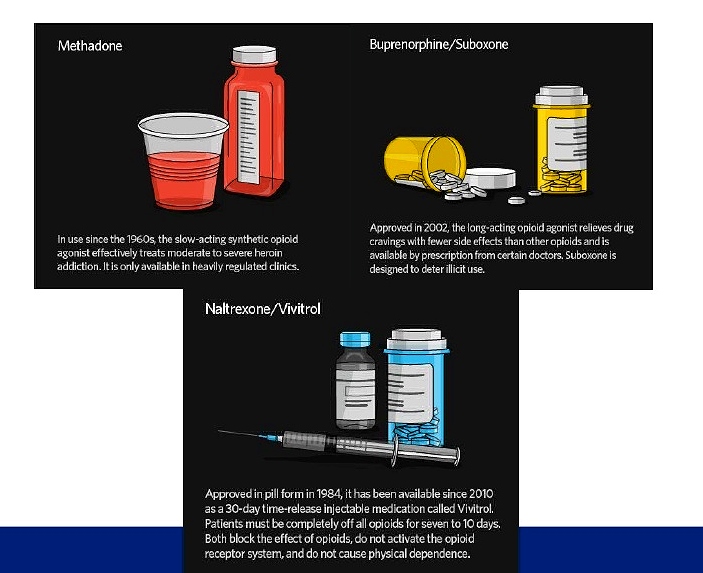
Most addiction treatment doctors and specialists agree that addressing addiction should include a multi-faceted combination of therapy, psychosocial support, inpatient and outpatient care, and medication. Addiction, which is defined as a chronic disease of the brain by the American Society of Addiction Medicine, doesn’t have a silver-bullet solution.
The Federal Drug Administration currently has three medications approved for substance use treatment for opioid addiction, which represent the standard of care for this illness. These three forms are frequently referred as medication-assisted treatment. According to Pew Research, the use of MAT can help reduce illicit opioid use by 40 to 70 percent on average. It also helps those use the medications reduce risk of HIV infection, reduces crime activity and improves employment opportunities.
Before introducing the three forms of medication, it’s important to understand how opioids are characterized. Opioids like heroin, oxycodone and fentanyl are agonists; this means the chemicals in the drugs bind to cell receptors that typically respond to naturally occurring substances, according to U.S. Department of Health & Human Services. So the three forms of MAT attempt to mimic or completely reverse the effects of agonists by binding to these receptors. The drugs help those with addiction wean off opioids by providing medication with similar effects.

The three forms of MAT approved by the FDA include:
methadone is a full agonist that’s consumed orally. As a full agonist, this drug binds to receptors and mimics the effects of opioids without producing the euphoric effects users typically seek. It’s typically given to people whose addiction is severe. It’s only legally available in highly-regulated facilities and can be addictive.
buprenorphine is a partial agonist, which means it binds to cell receptors but is not as strong as methadone. It also helps relieve the craving for opioids. It can be taken as a pill, an oral film strip, and recently, an implant. Common brand names include Suboxone, Bunavail and Zubsolv.
nalaxone/naltrexone are antagonists, which means these drugs binds the receptors but does not allow any of the effects of an agonist to be felt. These medications do not mimic the affects of agonists, but instead completely reverses them. Nalaxone is typically used in emergency response situations, as it can be used to reverse the effects of an opioid overdose. It can be delivered through an intranasal spray, an auto-injector cartridge or an intramuscular needle. Common brand names include Narcan. Naltrexone can used in extended-release form or in pills and is used for more long-term medication treatment. Common brand names include Vivitrol.
–Esteban L. Hernandez, New Haven Register
New Haven Treatment Centers
The state’s Department of Mental Health & Addiction Services website lists several, state-funded addiction treatment health centers on its website. At least seven operated in New Haven, with many more available in the Greater New Haven region.
Related Blog Posts:
